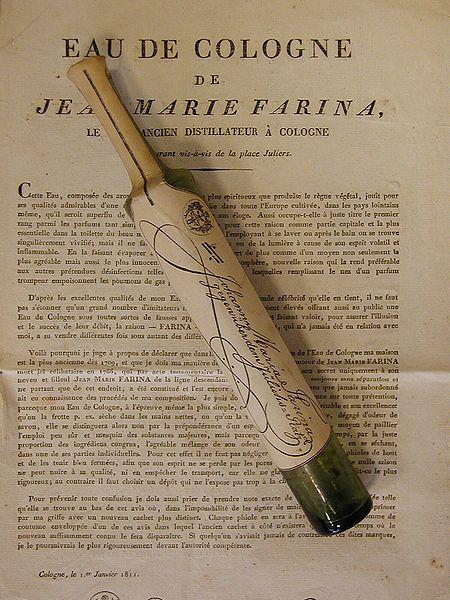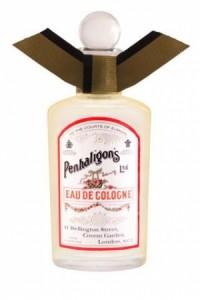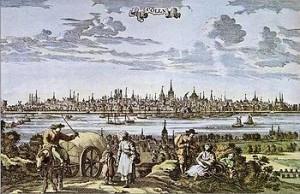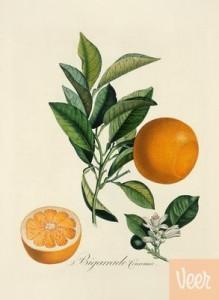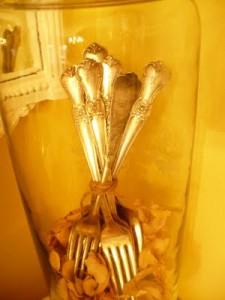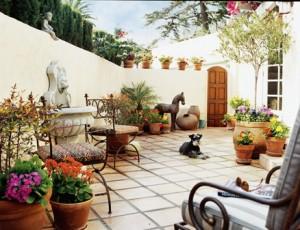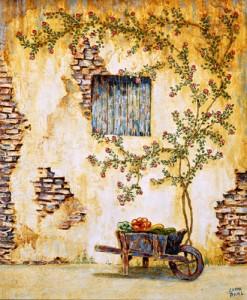Just like Marty McFly in his souped-up DeLorean time machine from the movie “Back To The Future” there seems to be times in perfumery where it's earlier history makes a revival. During the past few months, we have seen Eau de Cologne make a comebac; some ground -breaking work such as in the Atelier Cologne series of five fragrances (my review of all five http://tinyurl.com/3xv4jvw)
and in Thierry Wasser’s creation for Guerlain -Cologne du Parfumeur (our review here http://tinyurl.com/y4jvlel).
The latest is Penhaligon’s 1927 formulation of Eau de Cologne. With the return of quality Eau de Cologne, I am going to jump into my own time machine and re-visit the beginning of the genre ,as i have a flacon of Johan Maria Farina 1709 , so I can compare the two fragrances.
Johan Maria Farina 1709 is purported to be the formula which gave this style of fragrance its name, unchanged for three centuries. Johan Maria Farina wrote to his brother in 1708; "I have discovered a scent that reminds me of a spring morning in Italy, of mountain narcissus, orange blossom just after the rain. It gives me great refreshment, strengthens my senses and imagination.” He would come to name this new composition Eau de Cologne after his hometown of Cologne, Germany.
One of the reasons this fragrant concept has stood the test of time is, I believe, thesimplicity of it all. Johan Maria Farina in marrying a group of floral, herbal, and citrus notes together created a signature moment which has lasted for 301 years.
From the strongly citrus opening through the marriage of orange blossom and rosemary at the base, Johan Maria Farina 1709 is history in a bottle.
Penhaligon’s Eau de Cologne is a re-creation of the original 1927 Penhaligon’s fragrance and it was reformulated by Bertrand Duchaufour. By bringing in M. Duchaufour, Penhaligon’s found their grandparent’s old silver, buried in an attic, took it out, removed the tarnish, and added a new shine to it, revealing beautiful details that look just completely at ease placed next to contemporary dinnerwear.
I have never had the opportunity to smell the original Penhaligon's Eau de Cologne but this new version has a metaphorical lustre to it. While it contains many of the same notes as Johan Maria Farina 1709; citrus, rosemary, and neroli yet it comes off completely different. It feels like a version of one of those cooking shows where the chefs are given identical ingredients and they come up with very different but equally delicious dishes. The same is true here.
Penhaligon’s Eau de Cologne begins with the same group of citrus notes but somehow in this formulation there is a brightness to the early stages. This brightness is where I feel Bertrand Duchaufour must have had a small amount of involvement because it feels so similar to the brightness I found in Penhaligon’s Orange Blossom. This brightness zings off my skin and when the neroli and rosemary appear the shine never seems to disappear. Penhaligon’s Eau de Cologne feels as modern a fragrance as one created days ago.
Johan Maria Farina 1709 and Penhaligon’s Eau de Cologne have below average longevity and average sillage. This is a common characteristic of most Colognes nd in most cases it will require frequent re-application to get through a day. With fragrances this bright and luminous that is to be expected.
It is a lucky thing that perfumistos don’t really require a DeLorean Time Machine to experience fragrance history. Just a few clicks of a mouse or a trip to the fragrance counter and one can breathe the delights of fragrant history.
Disclosure: Johan Maria Farina 1709 was from my personal bottle purchased online. Penhaligon’s Eau de Cologne was from samples provided by Penhaligon’s and First-in-Fragrance.
-Mark Behnke, Managing Editor

